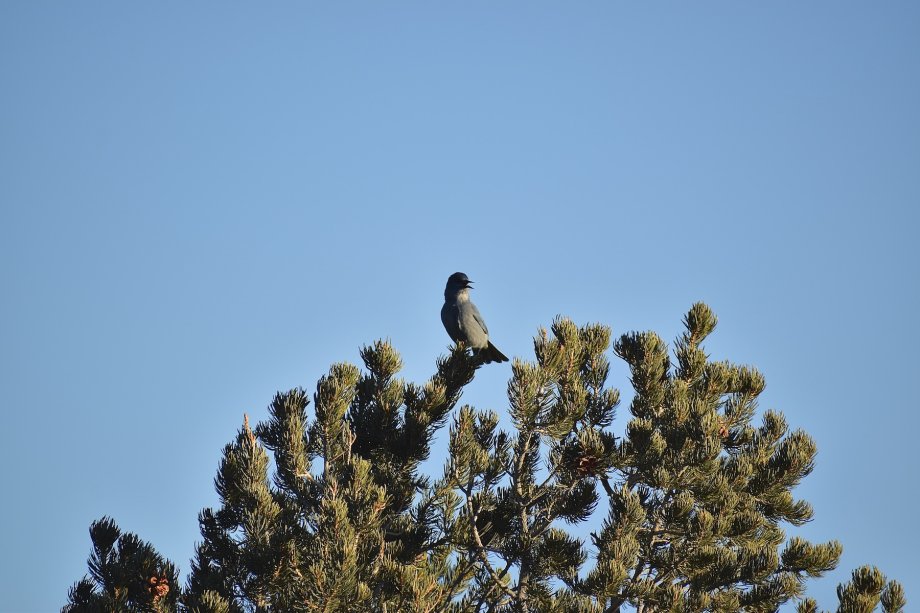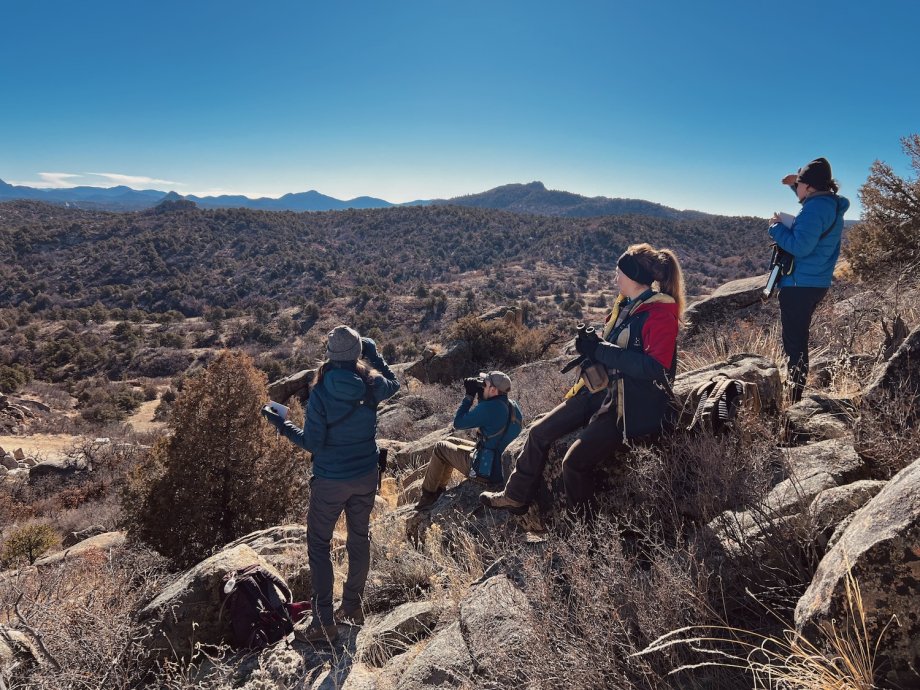
A bird that once flourished throughout the Western United States is falling victim to population decline. The pinyon jay (Gymnorhinus cyanocephalus), found in the Black Hills of South Dakota, has seen its population decline by as much as 83% in recent years, and now conservationists have petitioned for the jay to be listed as an endangered species to avoid further decline.
Two South Dakota State University researchers are currently working on a project to identify what conservation efforts are needed to preserve this iconic blue bird of the West.
Amanda Cheeseman, assistant professor in the Department of Natural Resource Management, and Emily Macklin, an SDSU graduate student, have partnered with the Bureau of Land Management, Colorado Field Ornithologists, U.S. Fish and Wildlife Service, and the Colorado Parks and Wildlife to identify locations of pinyon jay colonies in southern Colorado. They are also looking to map areas of high-quality nesting habitat across Colorado, ensuring woodland management is consistent with the bird's recovery.
Pinyon jays, which live together in large colonies, congregate near piñyon pines and piñyon-juniper woodlands—the prevailing forest type associated with the semi-arid landscape of southern Colorado. The jays feed on piñyon seeds and subsequently disperse them to other areas. These trees provide habitat for plants and animals—including other threatened species—in the region.
Drought and climate change have caused challenges for areas in the West, specifically in the semi-arid woodlands of southern Colorado where the jays reside. Record-breaking wildfires have destroyed acres and acres of forest and have drastically reduced the birds’ habitat.

Federal agencies, like the U.S. Department of Agriculture Forest Service, frequently use a technique called "mechanical thinning" to reduce the risk of out-of-control wildfires in these drought-ridden areas. While this method is important for reducing fire risk, it may disturb breeding individuals and degrade habitat for these vulnerable jays.
"It's a double-edged sword," Cheeseman said. "We are looking to find habitat solutions."
It's not just the birds that could be lost if declines continue. Piñyon-juniper woodlands could also become threatened as the pinyon jays play an important role in spreading the seeds necessary for restoration and growth.
Macklin, who is currently doing fieldwork in Colorado for this project, has found that large colonies of pinyon jays currently reside on land operated by the Bureau of Land Management. One of the primary objectives for Macklin is to determine what is good habitat for breeding jays and how to successfully maintain their habitat, while also managing for healthy landscapes.
As Cheeseman explains, investigating the response of pinyon jays to habitat and woodland management in this area may be key to restoring jay populations while maintaining healthy ecosystems.
Other objectives for this project include using the information, along with nest and colony data, to map areas of potential high-quality nesting habit across Colorado, prioritizing pinyon jay conservation and minimizing the potential negative impacts of woodland management.
This research can inform predictive models of where high-quality pinyon jay habitats are located, which, in turn, will inform sustainable land management practices and aid in the pinyon jay recovery efforts.
The project is partially funded through the Colorado Birding Challenge (COBC)—created to provide an annual flow of funds to support bird conservation projects throughout the state. The COBC is raising funds throughout May and encourages both Colorado residents and non-residents to participate in their fundraising challenge.
For more information on the challenge and how to get involved in birding, visit the COBC's website.
- Contact:
- Telephone number: 605-688-6161
Republishing
You may republish SDSU News Center articles for free, online or in print. Questions? Contact us at sdsu.news@sdstate.edu or 605-688-6161.

